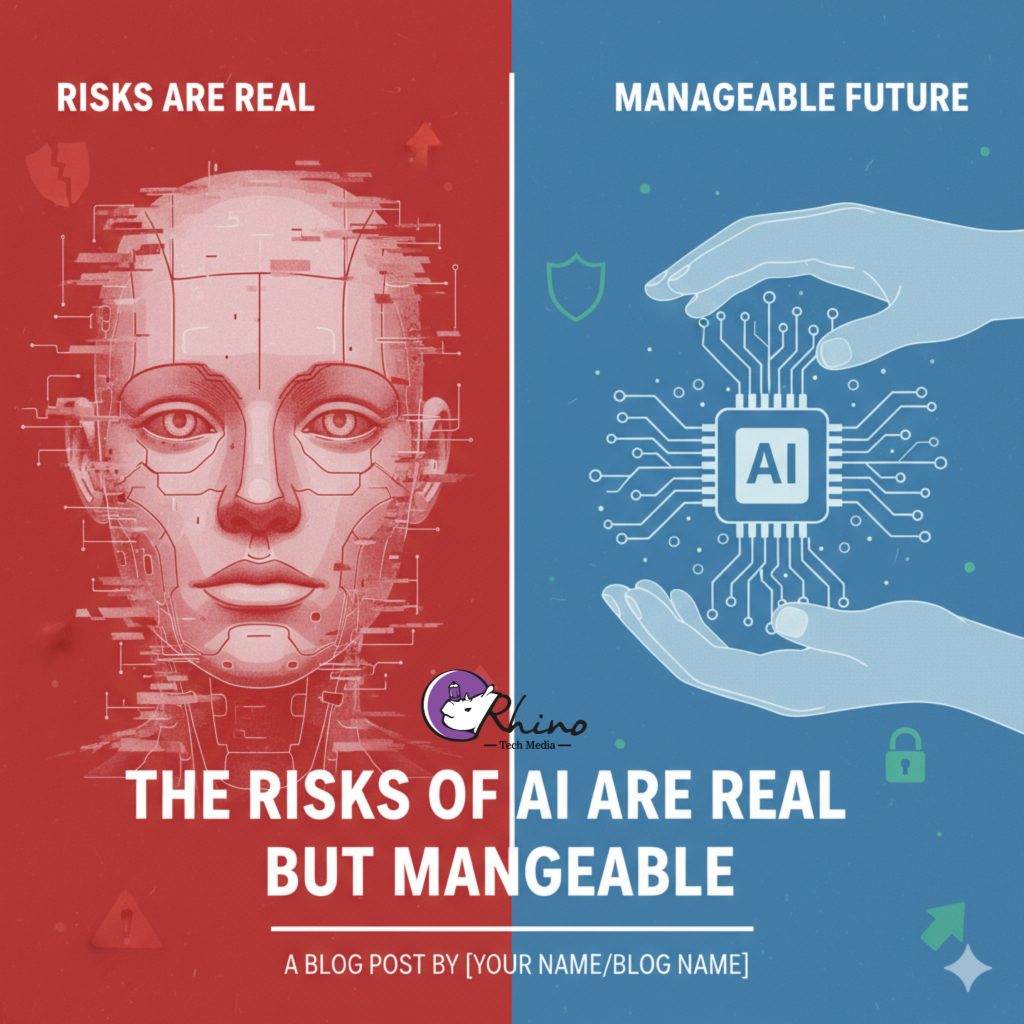The Risks of AI Are Real but Manageable
Artificial intelligence (AI) has rapidly transitioned from a futuristic concept to an everyday reality, influencing fields as diverse as healthcare, finance, education, and national security. While its benefits are substantial—boosting efficiency, uncovering insights from data, and expanding human capability—the risks it poses are equally undeniable. However, despite these legitimate concerns, the risks of AI are not insurmountable. With thoughtful governance, ethical design, and responsible use, society can manage AI’s dangers while still harnessing its transformative potential.
One of the most significant risks of AI lies in bias and discrimination. Machine learning systems reflect the data they are trained on, and if that data contains historical inequalities or prejudices, AI will replicate and even amplify those biases. Examples include biased hiring algorithms or predictive policing tools that unfairly target marginalized groups. Yet, these issues are not beyond control. Implementing fairness audits, diversifying datasets, and requiring transparency in algorithmic decision-making can greatly reduce bias. In essence, human oversight—paired with rigorous technical standards—can prevent AI from perpetuating injustice.
Another serious concern is job displacement. Automation threatens to replace certain types of work, particularly in manufacturing, logistics, and customer service. This creates legitimate fear of economic inequality and social unrest. However, the historical pattern of technological change suggests that while some jobs vanish, new ones emerge. Governments and organizations can manage this transition through proactive policies such as retraining programs, investment in education, and the creation of new roles in AI oversight, ethics, and maintenance. The focus should shift from resisting automation to reshaping the workforce for the future.
Security risks also loom large. AI can be used maliciously in the form of deepfakes, cyberattacks, or autonomous weapons. These threats are real and growing. Yet, just as with any powerful technology, regulation and defense can evolve alongside innovation. International agreements on AI safety, stricter cybersecurity measures, and the integration of “ethical kill switches” in autonomous systems are examples of ways to manage these dangers. The key is proactive collaboration between governments, private industries, and researchers to stay ahead of potential misuse.
Perhaps the most existential concern is loss of control—the fear that AI systems might one day surpass human intelligence and act in unpredictable ways. While such scenarios attract widespread attention, they remain speculative. Managing this risk requires ongoing research in AI alignment, explainability, and human-in-the-loop systems. By designing AI that remains transparent and controllable, humanity can ensure that the technology serves, rather than dominates, its creators.
Ultimately, the question is not whether AI poses risks—it clearly does—but whether humanity can rise to the challenge of managing them. History shows that societies have repeatedly navigated disruptive technologies, from the printing press to nuclear energy. Each demanded foresight, cooperation, and moral courage. The same applies to AI today.
In conclusion, AI represents both one of the greatest opportunities and one of the greatest responsibilities of our time. The risks are real—ranging from bias and unemployment to security and existential threats—but they are not unmanageable. Through ethical design, regulatory frameworks, and collective vigilance, we can guide AI development toward the common good. The future of AI will not be determined by the machines themselves, but by the wisdom and integrity of the humans who build and govern them.

